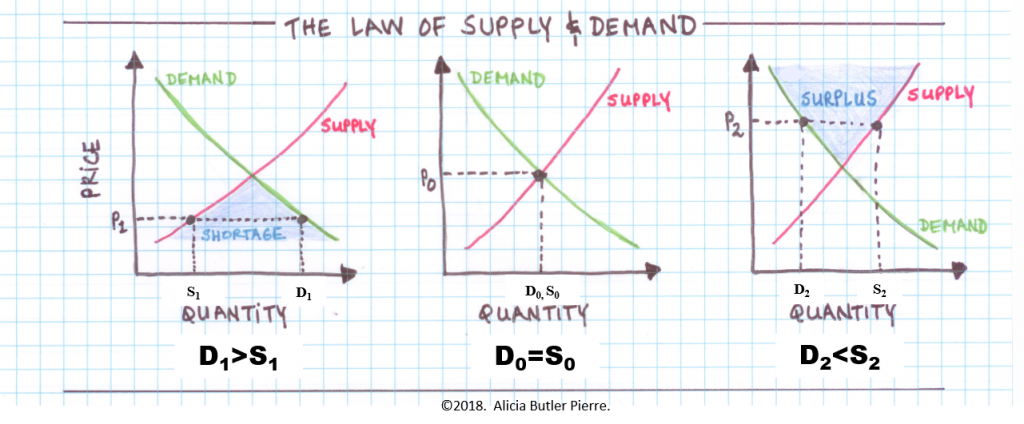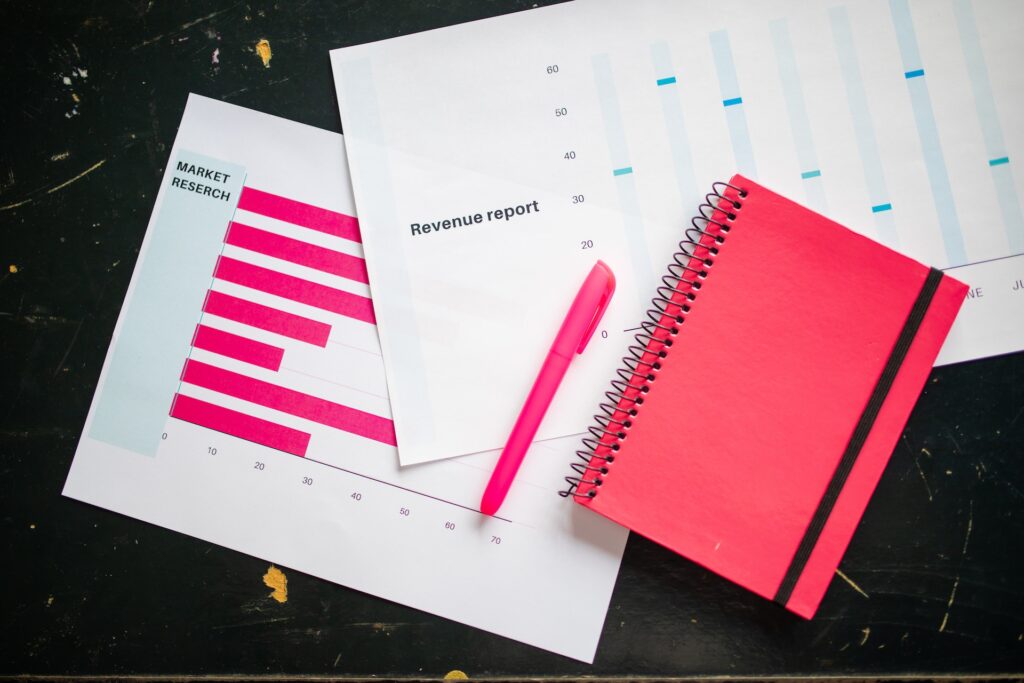More money, more problems.
To be more precise…more growth, more problems.
Chronic inconsistencies in customer support and product or service delivery are never a good thing. Left uncheck, these inconsistencies can lead to increases in customer and employee turnover as well as failed audits and inspections, amongst other detrimental things. At its worse, it contributes to creating an environment ripe for implosion.
This is what unmanageable fast growth looks like. It happens when small businesses have an imbalance in their labor supply and customer demand. Take a look at the diagram below. It is a simplified representation of the Law of Supply and Demand. The y axis represents price and the x axis represents the quantity that is either supplied or demanded at a particular price. While the quantity supplied has a direct relationship with price, the quantity demanded has an inverse relationship with price.
 As word spreads about how good your product or service is, the quantity demanded increases (D1) as shown in the far left of the diagram above. However, you may not have the resources required to supply (S1) or meet the surge in demand. When demand is greater than what your business can handle (D1>S1), a resource shortage occurs. One quick solution is to raise the price. This stifles the demand, biding you time to hire more staff, secure larger space or upgrade equipment to increase speed and capacity. Another solution is to automate the processes used to make your product or deliver your service.
As word spreads about how good your product or service is, the quantity demanded increases (D1) as shown in the far left of the diagram above. However, you may not have the resources required to supply (S1) or meet the surge in demand. When demand is greater than what your business can handle (D1>S1), a resource shortage occurs. One quick solution is to raise the price. This stifles the demand, biding you time to hire more staff, secure larger space or upgrade equipment to increase speed and capacity. Another solution is to automate the processes used to make your product or deliver your service.
Raising the price hopefully gets you to the point where supply and demand meet or balance each other (P0). This is known as the point of equilibrium (as shown in the middle of the diagram above) – the price that represents the intersection where customers are willing to buy and you can provide the product or service without resource constraints (D0=S0).
Warning! Your supply constraints may only be temporarily lifted during a price hike. If you raise the price too high, you may lose customers who’ll never come back. This could cause a surplus in your resources (D2<S2) as shown in the far right of the diagram above. In this situation, you’ll either have to offer more value for the new price or scale back on your resources. The Just-in-Time approach for resource use is one approach to consider implementing.
Balancing what your customer desires with what you can actually provide can be an ongoing battle. This is why having a business infrastructure in place helps. It articulates what needs to be done, by whom and how so that growth spurts don’t disrupt quality.
As the owner of a fast growing business, you can easily work yourself into an early grave trying to keep up with the exponential demand with limited supply.
I know from firsthand experience…
Unlike the name of my company, Equilibria, I had no balance in my life and business in early 2008. By that point, I had appeared on a local television show and had done enough networking to where a good bit of my business was referral-based. I had reached the first of what would be many “tipping points” that Malcolm Gladwell eloquently described. In my attempt to keep up the façade of having it altogether, I was spreading myself thin, taking on all kinds of projects with little to no discretion.
A friend suggested that I find a way to use the Pareto rule to figure out which projects accounted for 80% or more of Equilibria’s revenue. Up to that point, I had worked on about 70 different projects for clients.
In that quest, I barricaded myself in a cabin in the woods of North Georgia and when I emerged I figured out the solution to my supply/demand imbalance. I not only figured out which projects were least profitable, but in the process also discovered patterns from client to client, regardless of the industry their businesses were in.
I reduced the services I provided to 7 key areas which happened to match the more profitable projects I worked on. Those 7 key areas became the Kasennu methodology which has now been shared with thousands of small businesses around the world. The methodology led to an internal proprietary software that automated much of the work I previously did manually.
By suffering through this supply shortage, I was able to use a combination of a price increase as well as a new technology to ensure a more efficient supply chain while actually increasing the value and quality of the services overall.
Do you currently have more business than you can handle?
Schedule a free 30 minute phone call with me today! It’d be a shame to let all of your hard work in building your business diminish. I can perform a business infrastructure diagnostic on your business that includes a course of action tailored to your business’s specific needs. Equilibrium and peace of mind are just a phone call away!












